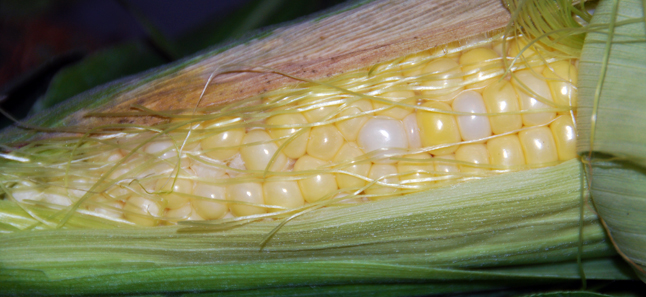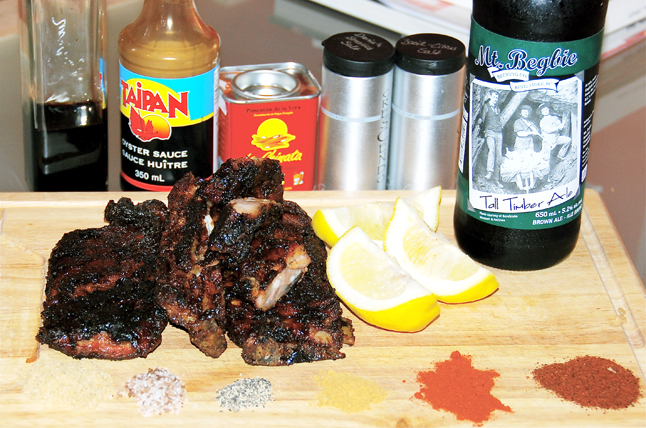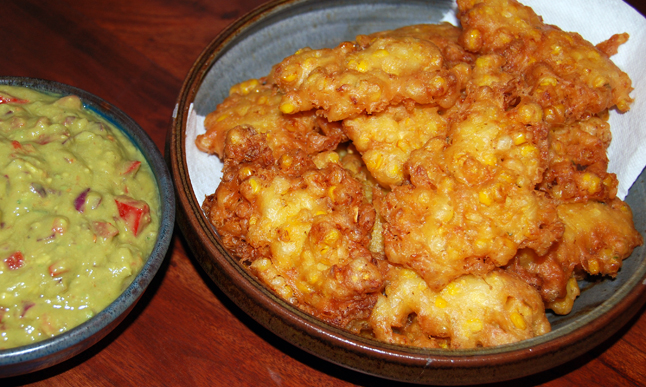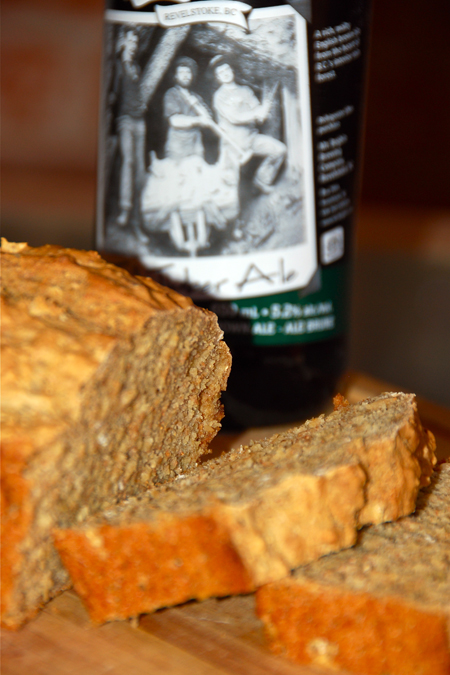
Ancient civilizations in Europe, Africa and Asia brewed beer, mead and wine. Fermentation offsets bacteria that can infest plain water, so beer and wine were safer drinks than water. Beer (from sprouted barley, called malt), wine from grapes and mead from fermented honey were all common and appear in historical records from about 5700 BC. Beer was perhaps the most widespread drink among both the nobility and common people. In ancient Egypt, Isis was the goddess of brewing, and the Pharaohs were entombed with plentiful supplies of beer for the afterlife. In Europe, even children drank beer, and monks were allotted a surprisingly generous quota in many monasteries.
Beer in the kitchens of ancient worlds was likely commonplace, but somehow we’ve lost the habit, replacing beer with milk in many recipes for baking and with wine or vinegar in braising meat. But beer can lend a full-bodied, slightly bittersweet flavour to many foods including breads, cheese dishes, meats and sauces, making beer in cooking a good choice for those who are lactose-intolerant. (The alcohol mainly evaporates, although trace amounts remain in many dishes.)
If this appeals, try replacing milk with beer in Welsh Rabbit, Cheese Strata, marinades for beef, pork and game of all sorts, and in biscuits, bread and other savory baked goods. The hops and malt add intensity and the yeast reacts with flours and baking powder to enhance the aeration of breadlike products. I’ve even seen recipes for puddings and aspics made with beer, but have resisted the temptation to make any of these. For starters, here are three recipes that together add up to a nice dinner: ribs, corn fritters and beer bread. If you try only one, make it the corn fritters now when there’s lots of fresh corn available. The fresher the corn, the better the fritters, but that’s true of all corn fest eating.

Use your favorite brew for cooking. Mount Begbie Brewery produces, like many micro-breweries that are now immensely popular with foodies, a range of unique, very flavourful, one-of-a-kind brews. And the Revelstoke U-Brew has a good range also of home brews that are made without preservatives. Either way, beer has food values that wine lacks: protein, calcium, niacin, riboflavin.
Serving beer is an art: in Canada we tend to like our beer cold, but many real aficionados drink beer at room temperature, especially in Britain. Never put beer into the freezer to cool it quickly — slow temperature changes are best. Beer glasses or jugs must be sparkling clean — air dry them, after rinsing away traces of detergent with several rinses of clean hot water. And pouring is an art — so many theories abound that in the end, personal preference for head (the foam) or none determines whether you pour directly into the centre of the glass or down the side (no head) — or drink from the can, as many ‘expert’ beer drinkers contend that the flavour is disturbed by each pouring.
Types of Beer
Ale: flavoured with hops, and fermented with a top-fermenting yeast that adds pronounced flavour.
Lager: Made with a bottom-fermenting yeast, and aged or “lagered” (ales are not.)
Pilsner: A light, golden type of beer originating in the Bohemian city of Pilsen.
Stout: Strong, dark, heavy beer popular in Ireland (Guiness, for instance.) High in vitamins. It’s true that pregnant women were encouraged to drink stout during the war, as a source of Vitamin B.
RECIPES FOR BEER
Slow Cook Beer Ribs
Corn Fritters in Beer Batter
Beer Bread

Slow Cook Beer Ribs
This version of barbeque ribs uses smoked salt and paprika to impart the smoky flavour of wood chips, and relies on a beer marinade, a sweet-salt-smoke rub and a brushing sauce based on the same medium dark ale. We used Mount Begbie’s Tall Timber Ale. The ribs marinate in beer for 24 hours for flavour and moisture, then simmer in the marinade; finally, they cook slowly (3 hours) over low heat in a covered barbeque. The simmer gets rid of some of the fat, and the long slow grilling allows the tough fibres surrounding the ribs to break down, and the marinade and basting ensure that the succulent bits of meat near the bone stay moist.
These are sticky type ribs—tender, succulent, full of flavour and like lots of good things in life, pretty messy. Three steps are involved: marinating, the rub, then grilling slowly with a basting sauce. You have to be around for 3 hours, but once the BBQ is set—one with a thermometer—you can just check on the ribs and baste them every half hour while you get on with the rest of life and dinner. It’s worth the effort—nothing beats the slow hand approach.
Ingredients
3-4 lbs pork ribs
2 large bottles Tall Timber Ale or 3 regular bottles or cans of dark ale (not stout)
Smoky spice rub
1 tbsp Danish smoked salt
1 tbsp citrus basil salt
4 tbsp brown sugar
2 tbsp chili powder (mild)
2 tbsp smoked paprika
Basting sauce
½ cup dark ale
½ cup orange juice
1 tbsp oyster sauce
1 tsp brown sugar
1 tbsp balsamic vinegar
juice of 1 lemon
The night before, wash the ribs and put them in a shallow baking dish. Pour over them a bottle of dark ale, cover with plastic wrap or foil and refrigerate overnight.
Make the rub: mix all rub ingredients in a small bowl.
Make the sauce: mix the ale, orange juice, oyster sauce, sugar, vinegar and lemon juice in a small bowl.
Four hours before dinner, remove the ribs and marinade from the fridge. Put the whole thing in a large deep pot, and bring to a boil; lower the heat and simmer for one hour. Drain the ribs, discarding the marinade. On a dry plate, rub the ribs thoroughly with the spice mix.
Heat the BBQ to 180F, heating only one side of the grill. Place the ribs over low heat, turning and basting every half hour. Keep the lid of the BBQ closed. If the ribs start to burn, pull them to the side of the grill without direct heat.
Continue grilling at low heat and basting for 3 hours. When the ribs seem a little loose in the rib plate, and you can put a fork through the meat easily, they are done. Let them rest for 15 minutes before cutting through the ribs; you can serve individual ribs, or let each diner cut ribs out from larger servings. You have to eat these with your fingers—and even the most delicate diners will end up smacking their lips and licking their thumbs as they gnaw every morsel of meat from the bone.
You can also do these ribs in the oven. Use a roasting pan with a grill, and keep the temperature at 180 F for the whole three hours.
For a real beer fest, serve with fresh ears of corn (shuck and boil for no more than 5 minutes, 3 for fresh-from-the-field corn) or corn fitters in beer batter, beer bread, potato salad with beer dressing, and a big salad of fresh tomatoes and cucumber drizzled with olive oil and balsamic and topped with crumbled feta. And of course—a tall glass of cold beer!
Don’t forget to pass LOTS of napkins.
Corn Fritters in Beer Batter

This is best with corn fresh from the farm—if possible, make these fritters the day the corn is picked. They’re still good with corn from the market, or even frozen corn, but each little kernel really pops in your mouth when the corn is farm fresh.
Heating the oil to 375 F is key to good fried fritters. If you don’t own a deep fryer, the best way to ensure consistent heat is to measure with a thermometer. When you put the fritters into the oil, they lower the fat temperature, so you have to adjust the heat to make sure the oil stays as close to 375 as possible, without burning. (Burning the oil breaks it down, and creates stuff that’s bad for you.) The highest burn point oils are best to use—peanut, safflower, sunflower.If you don’t have a thermometer, use a cube of bread, and put the fritters into the oil when the cube of bread instantly sizzles and crisps up when you put it into the oil.
2 cups all purpose flour
1 tsp salt
2 cups beer
¼ cup olive oil
1 large egg
3-4 cups fresh corn, (6 ears, shucked and kernelled)
3-4 cups peanut or sunflower seed oil
a fat thermometer
Stir together the flour, salt, beer, olive oil, and egg. Beat briefly with a whisk.
Put 3-4 cups oil into a large pot with high sides and heat to 375 degrees F on a fat thermometer. The crispiness of the fritters depends absolutely on the temperature of the oil. Let this mixture rest while you shuck the corn and with a sharp knife, remove the kernels from the corn. Mix the corn into the batter.
Put about two large tablespoons of the mix into the fat at a time, for fritters about 3 inches in diameter. You will probably only be able to cook 3-4 at a time. After about 3 minutes, turn the fritters over and cook the other side. Remove with a slotted spoon (the Chinese basket spoons are best) and drain on paper towels then keep warm in a low oven while you cook the remaining fritters. Discard the oil. (You can at a pinch sieve it and reuse once, but old oil is notoriously toxic.)
Serve with guacamole, lime-infused mayonnaise, or calamondine vinaigrette—or just a squeeze of lemon and some coarse salt. Don’t be surprised if they all disappear, but if you have leftovers they’re great reheated the next day.

Tall Timber Bread
This is a quick bread, fast and easy without rising or kneading, and it tastes surprisingly rich. The yeast in the beer acts as leavening, and the malt and hops (beer is after all based on barley) give it an intensely farmfield aroma and flavour. You could use any kind of beer—I like it with a moderately strong light brown ale. Stout would be too powerful unless you like really dark yeasty bread.
1 cup whole wheat flour
1 cup all purpose flour
½ cup rolled oats
2 tbsp sugar
2 tsp baking powder
½ tsp baking soda
½ tsp salt
1 ½ cups Tall Timber Ale
Preheat oven to 400F. Butter a 4” X 8” bread tin.
Mix all ingredients together in a big bowl, dry ingredients first, then the ale. The batter will be thick, not smooth, and you will see the reaction as soon as you add the beer. Quickly scrape the batter into the bread tin and put it into the oven on a lower shelf.
Bake for 30-35 minutes, testing with a toothpick to make sure it is cooked through (the toothpick will come out dry when it’s done.)



